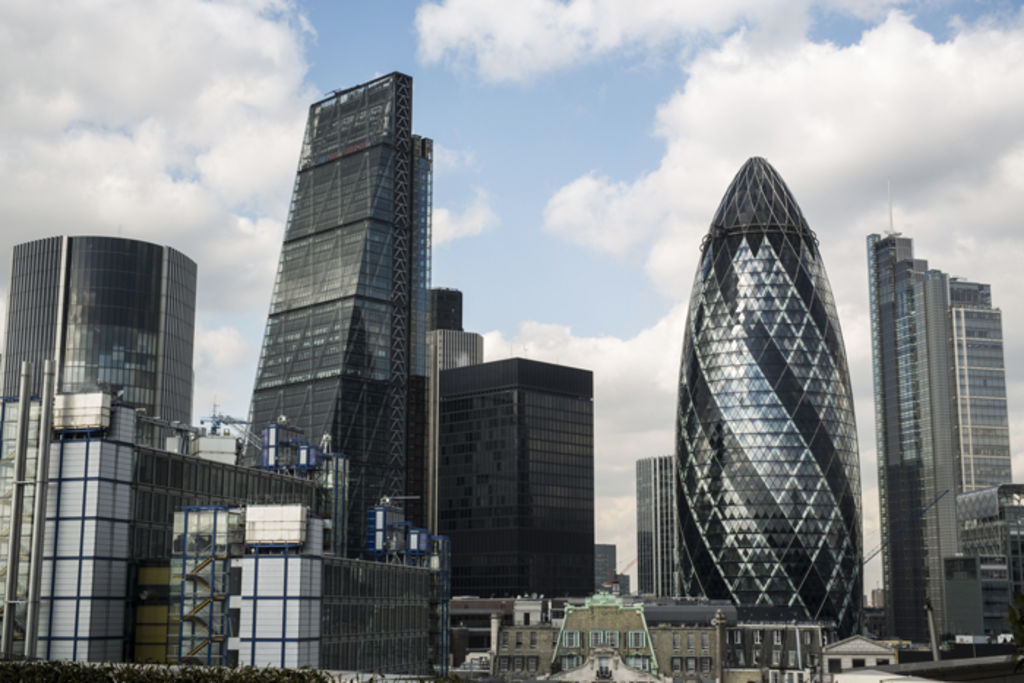
Are Australia's commercial buildings now too boring for a good nickname?
London has The Gherkin, The Walkie Talkie, The Cheesegrater and The Shard.
And what does Australia have? Either a complete lack of a sense of humour when it comes to colourful nicknames for our commercial buildings, or towers far too boring and indistinct ever to inspire us to bother.
One of the world’s leading architects, Ken Shuttleworth, the founder of the architecture firm Make, said this week that Australian companies are being put at a real disadvantage by having so few buildings with pet names that have captured the popular imagination.
Unlike in Britain, where it seems as soon as a new building punctures the skyline it’s immediately given a fond epithet, we simply call ours by their address, by the name of their anchor tenant or, worse, by the developer’s carefully-curated title. And that’s a huge mistake, Shuttleworth says.
“These names give buildings personality,” he says. “They make buildings personable. They become special places that everyone knows and that the people who work there feel ownership of. That’s really important for everyone.
“And if the architects or developers don’t give them good names, then journalists will name them, which can be a good thing, or bad.”
Environmental psychologist Natalie Slessor, the general manager of workplace & change at developer Lendlease, agrees. “People love places with a real identity,” she says. “Everyone wants a Gherkin or a Walkie Talkie.
“We’re behind in Australia with giving silly names for buildings. People need to feel that a place has something to do with them, and we need popular names for our buildings.”
Australia has certainly slipped a long way back in the fun-naming stakes. Scotland’s Glasgow, for instance, has its Clyde Auditorium, by architects Fosters & Partners, which looks strikingly like its new moniker The Armadillo. There’s also The Heart Beat, its Riverside Museum designed by Iraqi architect Zaha Hadid, with a zigzag steel roof, reminiscent of the heart beat on a monitor.
New York’s much-loved Fuller Building, a triangular 22-storey structure that in 1902 was the city’s tallest, is now universally called The Flatiron Building because of its shape. And while the South African football stadium in Johannesburg is called The Calabash because of its likeness to a cooking – or melting – pot, Beijing is the proud owner of The Bird’s Nest, its complex steel-structured national stadium.
In Australia, sadly, we have precious few buildings with imaginative nicknames.
Exceptions in Sydney may be the residential building Bennelong Apartments at Circular Quay, more popularly called The Toaster, and the Frank Gehry-designed wing of the UTS building – or The Squashed Paper Bag.
Melbourne, meanwhile, is on track for its ‘Pantscraper’, a $1.3 billion tower on Collins Street, designed by Woods Bagot and SHoP Architects, which will look remarkably like a pair of trousers when completed.
Brisbane is arguably further ahead, however, with its State Law Building dubbed Gotham City, or the Batman Building, for its resemblance to the American comic book city. And its tallest skyscraper, the new $650 million Queensland government building at 1 William Street, which has been given various names too rude to repeat here.
“Maybe the problem in Australia is that not enough people have built distinctive buildings,” says Kymbal Dunne, a director of Knight Frank, who knows the 39-storey Foster-designed Deutsche Bank building in Sydney as The Goalposts, and the 41-level Aurora Place on Phillip Street as The Ice Cream Cone. “Those buildings in London with quirky names are all highly distinctive structures that really stand out.
“ There’s a certain blandness about some of our architecture which doesn’t help … Look at the Reserve Bank building at the top of Martin Place in Sydney. It’s probably one of our most significant buildings in terms of location, but it’s pretty ordinary. Then there’s 20 Martin Place, the new building with Apple and Tesler downstairs. Would anyone ever say, ‘I really love that building?’
It’s probably not so much our architects’ fault, Dunne says; more the owners or investors who commission the buildings. They often prefer something that will reflect soberly on their corporate identity, rather than demonstrate a playful nature.
Budgetary constraints mean they’ll also be looking for the best return on their investment, via tall, blocky buildings without curves or spaces or interesting shapes that could shave precious square metres off floor-space ratios and rental yields.
There may be more potential for returns on residential buildings from highly individualistic designs, like the Crown Group’s Koichi Takada-designed Infinity in Green Square – nicknamed The Doughnut – or his Arc in the CBD on Clarence
Street, aka The Wurlitzer, as apartment-buyers feel being different is an excellent investment.
“But I think commercial real estate tends to be more corporate and professional and be regarded as serious places of business,” says Zelman Ainsworth of CBRE Melbourne.
Cameron Williams of Colliers International agrees. “Maybe we are too conservative,” he says. “The UK can be quite unconventional, but perhaps we’re not adventurous enough. That might be the architects, the owners or even the councils who run the design competitions or give permission for the proposals. Maybe they’ve all made us a bit boring.”
In Brisbane, Michael Feltoe of Ray White, is amazed that his city is doing so well, considering its relative dearth of commercial towers. “We’ve really only got a couple of towers in Brisbane,” he says. “But most are known by their addresses. It would be nice to have more juicy names!”
In addition, a lot of buildings are sold with naming rights, says Tim Evans of McGees Property Brisbane, and plaster those names up and down the sides of their towers which tends to inhibit the invention of others. “Naming rights have taken a lot of the fun out of it,” he says.
But Australians do have just as much of a sense of humour as the Brits, and really must make more of an effort, says Tim Fox, of PropertyFox. “Australians by nature are cheeky and irreverent,” he says. “I would encourage a bit more fun and
sassiness and excitement in our naming of buildings.”














